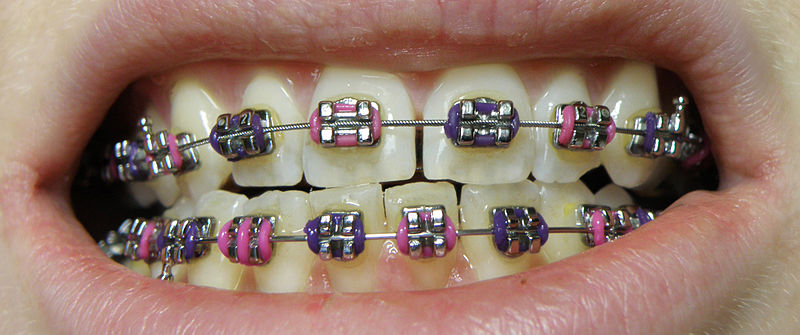Comprehensive Overview to Orthodontics Procedures for Remedying Oral Imbalances
In the realm of orthodontics, the journey to attaining a completely aligned smile entails a myriad of treatments customized to correct oral misalignments. From typical braces to invisible aligners and also medical alternatives, the field of orthodontics supplies a variety of solutions to attend to varying degrees of oral irregularities. Comprehending the complexities of each treatment, including their mechanisms, advantages, and possible disadvantages, is vital in making informed choices about one's orthodontic treatment. As we browse through the detailed overview to orthodontic procedures for dealing with oral imbalances, the elaborate information of each approach will unfold, clarifying the path toward a unified and useful dental placement.
Orthodontic Procedures Introduction

Normal modifications and surveillance are crucial parts of orthodontic treatment to make sure progress is on track and to make any kind of required alterations along the means. By going through orthodontic treatments, clients can not just achieve a straighter grin yet likewise boost their general dental health and wellness and feature.
Traditional Dental Braces: Just How They Work
When thinking about orthodontic treatments for oral imbalances, conventional braces stand out as a tried and true method for dealing with teeth placing. Conventional braces are composed of brackets, wires, and bands that function together to apply continual pressure on the teeth, progressively relocating them into the wanted positioning.
One key facet of exactly how traditional dental braces work is the procedure of bone improvement. As pressure is related to the teeth through the dental braces, the bone surrounding the teeth is improved to support the brand-new tooth settings. This remodeling is necessary for the long-term security of the dealt with placement. Patients will require routine adjustments at the orthodontist's office to ensure the braces proceed to apply the right pressure for efficient teeth activity.
Unseen Aligners: Disadvantages and pros
These clear, customized trays are essentially undetectable when used, making them an attractive choice for individuals seeking a more visually pleasing orthodontic therapy. People can eliminate the aligners before eating or cleaning their teeth, lowering the threat of food obtaining stuck in the appliance and simplifying the cleansing procedure.

Surgical Orthodontic Options
Surgical interventions in orthodontics existing viable choices for addressing complicated oral misalignments that may not be properly dealt with via conventional orthodontic treatments. While typical braces and undetectable aligners can deal with lots of orthodontic issues, specific instances call for medical treatment to attain optimal results. Surgical orthodontic alternatives are typically recommended for serious malocclusions, substantial jaw discrepancies, and situations where the underlying bone framework needs adjustment to achieve correct placement.
One common surgical orthodontic procedure is orthognathic surgery, which includes repositioning the jaws to fix functional issues such as trouble eating or talking. This surgical procedure is often performed in collaboration with an orthodontist that aids straighten the teeth before and after the treatment. Surgical orthodontics might also involve treatments to subject influenced teeth, eliminate excess periodontal cumming orthodontist cells, or reshape the jawbone to create an extra harmonious facial account.
Prior to taking into consideration medical orthodontic choices, individuals go through a detailed analysis to establish the need and possible benefits of such interventions. braces. While surgery might appear complicated, it can substantially enhance both the function and aesthetic appeals of the smile in cases where standard orthodontic therapies fall short
Retainers and Post-Treatment Treatment

Failure to conform with post-treatment treatment guidelines can result in relapse, where the teeth progressively move back towards their initial placements. Consistent retainer wear, great dental health, and regular dental examinations are crucial for maintaining the outcomes attained via orthodontic surgery and making sure the lasting security of the corrected dental positioning.
Final Thought
In conclusion, orthodontic procedures provide various options for correcting oral imbalances. Surgical orthodontic options are readily available for more extreme imbalances. Generally, orthodontic procedures can efficiently improve oral wellness and aesthetic appearance.
As we browse through the comprehensive overview to orthodontic treatments for fixing dental imbalances, the complex details of each method will certainly unfold, shedding light on the path towards a unified and practical dental alignment. - invisalign
One of the most common orthodontic therapies is the use of dental braces, which consist of steel braces and wires that use gentle stress to gradually change teeth into the wanted setting.When considering orthodontic therapies for dental imbalances, conventional dental braces stand out as a tried and true method for remedying teeth positioning. Furthermore, invisible aligners might not be suitable for complicated orthodontic concerns that call for more substantial teeth motion, as they are usually recommended for moderate to modest instances. Retainers are tailor-made orthodontic gadgets developed to hold teeth in their dealt with placements after the completion of orthodontic therapy.